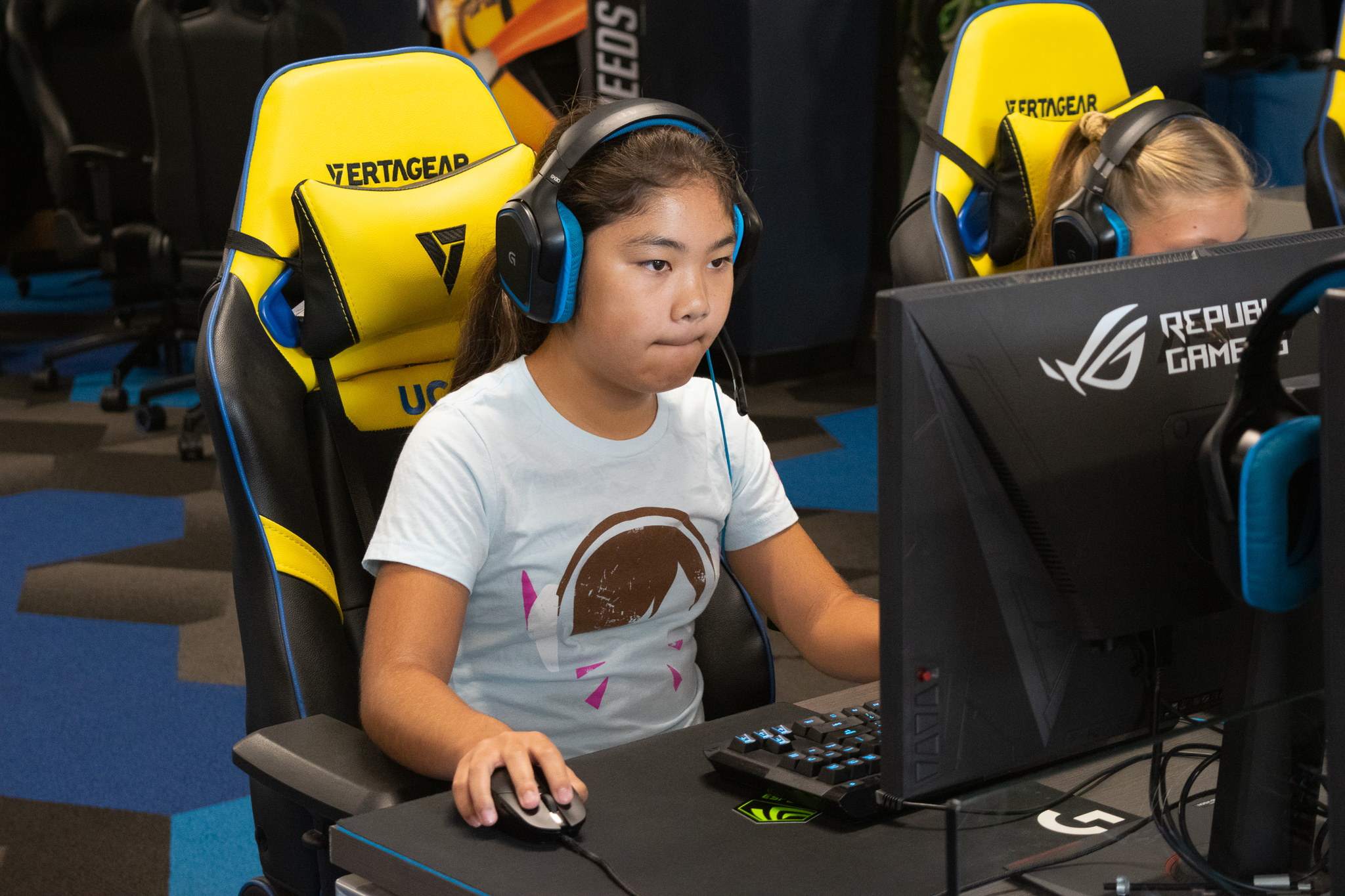If you’re looking into buying a school epsorts system then you’re in the right place. This guide aims to lay out all you need to consider to get the best setup for esports in your school or district. So from buying a single machine to kitting out an entire district, there should be plenty to consider and to help you below.
From thinking about how to run an esports program and what are the best gaming systems for school esports programs, there’s a lot to know before buying. A good place to start involves thinking about this not as an esports program alone but as an investment in STEM learning. So it’s important to ask what you’re looking to achieve with this program before you get started.
For example, is this solely focused on gaming or are you setting out to teach more about areas such as coding, streaming, video production, animation, and beyond? Knowing this can help you make the right setup decisions at the start so it’s possible to change and expand as needed in future, without costing too much.
Read on to consider a few important areas before starting your school esports system.

Power and cooling
Before you can start to think about machines, you need to ensure the space you have is suitable for esports hardware. The two major concerns here are power and cooling.
Make sure you have enough socket spaces available not only for computers but also monitors and potentially projectors, speakers, and modems too. And that the electrical wiring is setup to bear that load when it’s all running at once.
Cooling is very important as the machines themselves may have measures to keep overheating at bay, but if the room space is too hot even that won’t be enough. A cool machine is one that runs optimally, which is imperative in quick-reaction gaming online. So central air conditioning that can work to keep the room at one temperature — even when filled with hardworking machines and bodies — is a must.
Hardware options
Once you come to the buying stage for machines you’ll want to consider a few main issues: the computer itself, the monitor, a comfortable and supportive seat, and headphones/microphones. Plus, the keyboard and mouse or gaming controller combination, which can also play an important role.
For the computer you’ll want to ensure there is a powerful graphics card running alongside a fast CPU and plenty of RAM for optimal performance speeds. For a PC you’ll want to aim for an Intel i7 at least with a minimum of 16GM of RAM. For the graphics card, consider an Nvidia or AMD option.
If you also want to use the machines for animation and design then an Intel i9 is advisable with at least 32GB of RAM. In both instances, at least 1TB of SSD storage is also advisable.
Monitors will need a high resolution of at least 1920 x 1080 but also, ideally, a fast refresh rate and wide range of colors. This will allow for high-speed gaming but also the option to work on animation and image editing with the clarity required.

Peripherals
While these are called peripherals, the keyboard and mouse are integral parts of the esports setup as they’re the pinch point through which the gamer and machine exchange information — at very high speeds.
For this reason you’ll want to go for a mechanical keyboard in which the keys are not only responsive to the touch but also have the hardiness to offer longevity even with extended use.
A gaming mouse also helps as it can offer more sensitivity, responsiveness, comfort, and buttons than a standard option. These are also built to a standard that to last longer, which means the higher up-front cost ends up working better in the long run over a cheaper option.
A decent headphones-with-microphone setup is a good investment too as it allows for communication that’s clear and is comfortable for longer periods of time. Again, spending more should also mean these last longer, even when being used by different-sized people that adjust regularly.
Software
The software is nearly as important as the hardware running it. For a PC setup you’ll want to have the latest Windows operating system running for maximum efficiency as well as compatibility with games.
Pre-install all the launchers you need for the games you’re going to be using. That could be Minecraft Launcher, Epic Games Installer, OBS, or all of these and more. You may also want to consider your animation courses and offer CADD, Adobe Cloud, Maya, and the like.
Once you’re setup it’s advisable to create a disc image so you can always get back to that ready and pure state, should you need to. You can then image all the machines manually or push through the network so you’re ready to go and updates are easily installed.
Ongoing support
Longer term you’ll need to manage issues such as storage and course content. If you plan to record gaming matches, for example, you may want to invest in the setup of some off-site storage, perhaps cloud-based, to ensure you can record without filling up and slowing down machines locally. Google Drive or a NAS setup can work well to assist here.
Using an LMS can also help as a way to offer course content as students progress. Using a system such as Gameplan allows you to select esports instructions and content for coaching before assigning that to students. This can be customized before being assigned and can be used again, perhaps after editing, for future lessons and students, too. A great way to save time in the long run by getting setup early.

